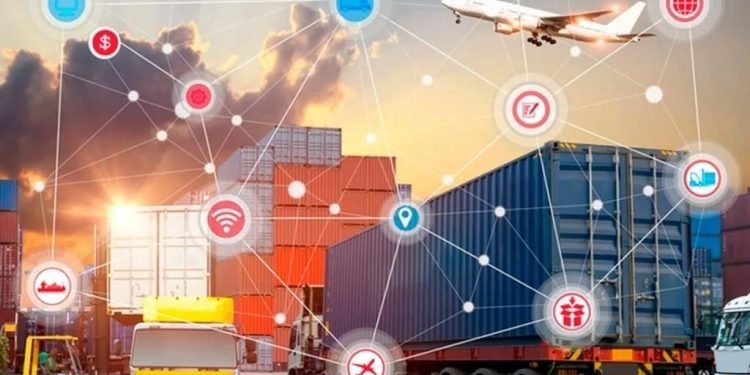By Maria Kalamatas
March 5, 2025 – The Logistic News
The digital logistics market is poised for unprecedented growth, with projections estimating it will reach $155.3 billion by 2032. As AI, automation, and blockchain technologies revolutionize supply chain management, companies are accelerating their adoption of smart logistics solutions to optimize efficiency and reduce operational costs.
Driving Forces Behind Digital Logistics Expansion
Several key factors are fueling this rapid market expansion:
- The rise of e-commerce – Increasing consumer demand for fast, trackable, and seamless deliveries is pushing logistics providers toward digital transformation.
- AI-powered supply chain management – Real-time analytics, predictive modeling, and AI-driven route optimization are minimizing disruptions.
- Automation and robotics – Warehouse automation and autonomous vehicles are improving operational efficiencies.
- Blockchain for transparency – Securing end-to-end supply chain visibility is driving investment in blockchain-powered logistics.
- Sustainability initiatives – Digital platforms are enabling greener logistics by optimizing fuel consumption and route planning.
A senior logistics executive told The Logistic News: “Companies that fail to invest in digital logistics risk falling behind. The industry is shifting toward AI, automation, and data-driven operations at an unprecedented pace.”
Key Players Shaping the Digital Logistics Landscape
Industry leaders and tech innovators are investing heavily in next-generation logistics solutions. Among the major players:
- Amazon and Alibaba – Enhancing logistics automation with AI-driven warehousing and drone delivery systems.
- Maersk and DHL – Leading in blockchain-enabled freight tracking and digital freight platforms.
- SAP and Oracle – Powering the transition with cloud-based logistics and AI analytics platforms.
- Tesla and Waymo – Advancing autonomous freight transport through electric and self-driving truck technologies.
Challenges in Digital Logistics Adoption
Despite its rapid growth, the digital logistics sector faces significant hurdles:
- Cybersecurity risks – Increased digitization means higher vulnerability to cyber threats.
- Integration complexities – Many logistics companies struggle with legacy system compatibility.
- High initial investment – Implementing AI, IoT, and automation requires significant financial commitment.
- Global regulatory compliance – Standardizing cross-border digital logistics frameworks remains a challenge.
What’s Next for Digital Logistics?
By 2032, the digital logistics industry is expected to:
- See AI-driven logistics planning become the industry standard.
- Implement 5G-powered smart warehouses, enabling real-time tracking at an unprecedented scale.
- Expand blockchain-based logistics, ensuring transparency and fraud prevention in international trade.
- Enhance sustainability efforts, with AI optimizing carbon-neutral supply chains.
As the logistics industry embraces automation, AI, and next-gen digital platforms, businesses that prioritize smart logistics strategies will dominate the market.
For more exclusive insights on digital logistics and supply chain transformation, stay connected with The Logistic News.























